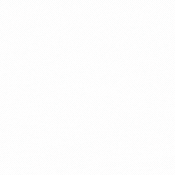Impacto del Plan Ibirapitá sobre la brecha gris en Uruguay
Resumen
Se predice el impacto que tiene el Plan Ibirapitá ―en tanto política pública orientada a superar la divisoria digital― sobre la brecha gris que se constata entre las mujeres de 65 años o más en Uruguay. De acuerdo a este modelo, la divisoria digital representa la principal barrera para el uso de Internet entre las mujeres de 65 años o más beneficiarias del Plan Ibirapitá. El mayor impacto individual entre las variables de la infraestructura tecnológica consideradas es el de la tableta Ibirapitá. Sin embargo, las predicciones del modelo indican que su incidencia sobre la probabilidad de uso de Internet está sujeta a la disponibilidad de conexión a Internet en el hogar.
A su vez se confirmó la incidencia de la estructura del hogar y de la red familiar sobre la probabilidad de uso de Internet. La motivación de tener un hijo lejos, en el exterior, incide positivamente sobre la probabilidad de uso de Internet, al igual que la presencia de pareja en el hogar y la vida en un hogar unipersonal. No obstante, la presencia de hijos o de menores de 14 años en el hogar disminuye la probabilidad de uso de Internet. De hecho, a pesar de tener computadora e Internet en el hogar, cuando las mujeres de perfil promedio analizado conviven con menores de 14 años o con hijos en el hogar, no usan Internet. En dicho escenario sin divisoria digital, la brecha gris es superada con la tableta del Plan Ibirapitá.
Descargas
Citas
ALDANA, G.; GARCÍA, L.; JACOBO, A. (2012). Las Tecnologías de la Información y Comunicación (TIC) como alternativa para la estimulación de los procesos cognitivos en la vejez. CPU-e, Revista de Investigación Educativa, 14. Recuperado de http://www.uv.mx/cpue/num14/practica/aldana_garcia_mata_tic_vejez.html
ANTONUCCI, T. C.; AJROUCH, K. J.; BIRDITT, K. S. (2014). The convoy model: Explaining social relations from a multidisciplinary perspective. The Gerontologist, 54(1), 82-92. doi: 10.1093/geront/gnt118
ARBER, S.; DAVIDSON, K.; GINN, J. (2003). Gender and ageing. Maidenhead Filadelfia: Open University Press.
BANDURA, A. (1977). Social learning theory. Englewood Cliffs: Prentice-Hall.
BANDURA, A. (1994). Social cognitive theory of mass communication. En J. Bryant y D. Zillman (Eds.), Media effects: Advances in theory and research (pp. 61 89). Hillsdale: Lawrence Erlbaum.
BARNARD, Y. et al. (2013). Learning to use new technologies by older adults: Perceived difficulties, experimentation behaviour and usability. Computers in Human Behavior, 29(4), 1715 1724. doi: 10.1016/j.chb.2013.02.006
BARRANTES CÁCERES, R.; COZZUBO CHAPARRO, A. (2017). Age for learning, age for teaching: The role of inter-generational, intra-household learning in Internet use by older adults in Latin America. Information, Communication & Society, 1 17. doi:10.1080/1369118X.2017.1371785
BINOTTI, P.; SPINA, D. (2009). Funciones ejecutivas y aprendizaje en el envejecimiento normal: Estimulación cognitiva desde una mirada psicopedagógica. Revista Chilena de Neuropsicología, 4(2), 119 126.
BLASCHKE, C. M.; FREDDOLINO, P. P.; MULLEN, E. E. (2009). Ageing and technology: A review of the research literature. British Journal of Social Work, 39(4), 641 656. doi: 10.1093/bjsw/bcp025
BOGLIACCINI, J. A.; RODRÍGUEZ, F. (2015). Regulación del sistema educativo y desigualdades de aprendizaje en el Uruguay. Revista CEPAL. Recuperado de http://200.9.3.98/handle/11362/38798
BROADY, T.; CHAN, A.; CAPUTI, P. (2010). Comparison of older and younger adults’ attitudes towards and abilities with computers: Implications for training and learning. British Journal of Educational Technology, 41(3), 473 485.
BROWN, S. A.; VENKATESH, V.; BALA, H. (2006). Household technology use: Integrating household life cycle and the model of adoption of technology in households. The Information Society, 22(4), 205 218. doi:10.1080/01972240600791333
CABALLERO DE LUIS, S. (2014). Internet, vejez y redes sociales en Uruguay: ¿se relacionan el soporte social e Internet? Revista de Ciencias Sociales, DS FCS, 27(35), 137-160.
CABALLERO DE LUIS, S. (2016). Internet, familia y hogares entre las mujeres mayores en Uruguay. Universitat Oberta de Catalunya. Recuperado de https://www.researchgate.net/publication/311453428_Internet_familia_y_hogares_entre_las_mujeres_mayores_en_Uruguay
CAÑADAS RECHE, J. L. (2013). Regresión logística. Tratamiento computacional con R. (Tesis de maestría en Estadística Aplicada, Universidad de Granada). Recuperado de https://www.researchgate.net/profile/Jose_Canadas-Reche/
CHAFFIN, A. J.; HARLOW, S. D. (2005). Cognitive learning applied to older adult learners and technology. Educational Gerontology, 31(4), 301 329. doi:10.1080/03601270590916803
CHANG, J.; MCALLISTER, C.; MCCASLIN, R. (2015). Correlates of, and barriers to, Internet use among older adults. Journal of Gerontological Social Work, 58(1), 66-85. doi:10.1080/01634372.2014.913754
CHOI, N. G.; DINITTO, D. M. (2013). The digital divide among low income homebound older adults: Internet use patterns, eHealth literacy, and attitudes toward computer/Internet use. Journal of Medical Internet Research, 15(5), 93. doi:10.2196/jmir.2645
CORREA, T. et al. (2013). Brokering new technologies: The role of children in their parents’ usage of the Internet. New Media & Society.
CUTLER, S.; HENDRICKS, J.; GUYER, A. (2003). Age differences in home computer availability and use. The Journals of Gerontology, 58(B), 271 280.
CZAJA, S. J.; SHARIT, J. (2012) Designing training and instructional programs for older adults. Boca Ratón: CRC Press.
DAMODARAN, L.; SANDHU, J. (2016). The role of a social context for ICT learning and support in reducing digital inequalities for older ICT users. International Journal of Learning Technology, 11(2), 156-175.
DANNEFER, D. (1987). Aging as intracohort differentiation: Accentuation, the Matthew effect, and the life course. Sociological Forum, 2, 211 236.
DANNEFER, D.; SETTERSTEN, R. A. (2010). The study of the life course: Implications for social gerontology. En The SAGE handbook of social gerontology (pp. 4 20). Sage.
DE BENITO-CASTANEDO, J. (2017). Análisis bibliográfico sobre la brecha digital y la alfabetización en nuevas tecnologías. Revista Electrónica Educare, 21(2), 1. doi: 10.15359/ree.21-2.9
FERREIRA, S. M.; SAYAGO, S.; BLAT, J. (2016). Going beyond telecenters to foster the digital inclusion of older people in Brazil: Lessons learned from a rapid ethnographical study. Information Technology for Development, 22(1), 26-46. doi 10.1080/02681102.2015.1091974
FRIEMEL, T. N. (2016). The digital divide has grown old: Determinants of a digital divide among seniors. New Media & Society, 18(2), 313 331.
GALPERIN, H. (2017). Why are half of latin americans not online? A four country study of reasons for Internet non-adoption. International Journal of Communication, 11, 3332-3354.
GELMAN, A.; HILL, J. (2007). Data analysis using regression and multilevel/hierarchical models. Nueva York: Cambridge University Press.
HAEDERLE, M. (2011). Technology fear stops older adults from logging on: But scientists are breaking the computer block. AARP Bulletin. Recuperado de http://www.aarp.org/technology/innovations/info-08-2011/elderly-fear-of-technology.3.html
HAIR, J. et al. (2010). Multivariate data analysis (7.a ed.).
HARGITTAI, E.; DOBRANSKY, K. (2017). Old dogs, new clicks: Digital inequality in skills and uses among older adults. Canadian Journal of Communication, 42(2), 195-212. doi:10.22230/cjc2017v42n2a3176
HELSPER, E. (2009). The ageing Internet: Digital choice and exclusion among the elderly. Working with Older People, 13(4), 28-33.
HELSPER, E. (2010). Gendered Internet use across generations and life stages. Communication Research, 37(3), 352 374. doi: 10.1177/0093650209356439
Instituto Nacional de Estadística, Uruguay (2016). Encuesta continua de hogares 2016. Recuperado de http://www.ine.gub.uy/web/guest/encuesta-continua-de-hogares1
LÓPEZ ROLDÁN, P.; FACHELLI, S. (2015). Análisis de regresión logística. En Metodología de la Investigación Social Cuantitativa, 1.a ed., (pp. 5 56). Bellaterra (Cerdanyola del Vallès): Dipòsit Digital de Documents, Universitat Autònoma de Barcelona. Recuperado de http://ddd.uab.cat/record/163570
MA, Q. et al. (2015). Acceptance of ICTs by older adults: A review of recent studies. En J. Zhou y G. Salvendy (Eds.), Human aspects of IT for the aged population. Design for aging, Vol. 9193 (p. 239). Los Ángeles: Springer.
MERRIAM, S. B.; CAFFARELLA, R. S.; BAUMGARTNER, L. M. (2012). Learning in adulthood: A comprehensive guide. John Wiley & Sons.
MILLWARD, P. (2003). The “grey digital divide”: Perception, exclusion and barriers of access to the Internet for older people. First Monday, 8(7). doi:.5210/fm.v8i7.1066.
MORI, K.; HARADA, E. T. (2010). Is learning a family matter?: Experimental study of the influence of social environment on learning by older adults in the use of mobile phones: Is learning a family matter? Japanese Psychological Research, 52(3), 244-255. doi: 10.1111/j.1468-5884.2010.00434.x
MUBARAK, F.; NYCYK, M. (2017). Teaching older people Internet skills to minimize grey digital divides: Developed and developing countries in focus. Journal of Information, Communication and Ethics in Society, 15(2), 165 178. doi: 10.1108/JICES-06-2016-0022
PETRETTO, D. R. et al. (2016). Envejecimiento activo y de éxito o saludable: Una breve historia de modelos conceptuales. Revista Española de Geriatría y Gerontología, 51(4), 229 241. doi:10.1016/j.regg.2015.10.003
PHILLIPS, J.; AJROUCH, K.; HILLCOAT NALLÉTAMBY, S. (2010). Key concepts in social gerontology. Sage.
Plan Ibirapitá. Plan de inclusión digital de jubilados. (s. f.). Recuperado de http://ibirapita.org.uy/
SCHEERDER, A.; VAN DEURSEN, A.; VAN DIJK, J. (2017). Determinants of Internet skills, uses and outcomes: A systematic review of the second -and third- level digital divide. Telematics and Informatics. doi: 10.1016/j.tele.2017.07.007
SILVA, E. B. (2010). Technology, culture, family: Influences on home life. Palgrave Macmillan, UK.
TSAI, H. S.; SHILLAIR, R.; COTTEN, S. R. (2015). Social support and “playing around”: An examination of how older adults acquire digital literacy with tablet computers. Journal of Applied Gerontology. 36(1), 29-55. doi:10.1177/0733464815609440
VAN DEURSEN, A., HELSPER, E. J., EYNON, R., y VAN DIJK, J. A. G. M. (2017). The compoundness and sequentiality of digital inequality. International Journal of Communication, 11, 452–473.
World Health Organisation. (2002). Active ageing: A policy framework.
Derechos de autor 2019 Soledad Caballero

Esta obra está bajo licencia internacional Creative Commons Reconocimiento 4.0.







.jpg)




















